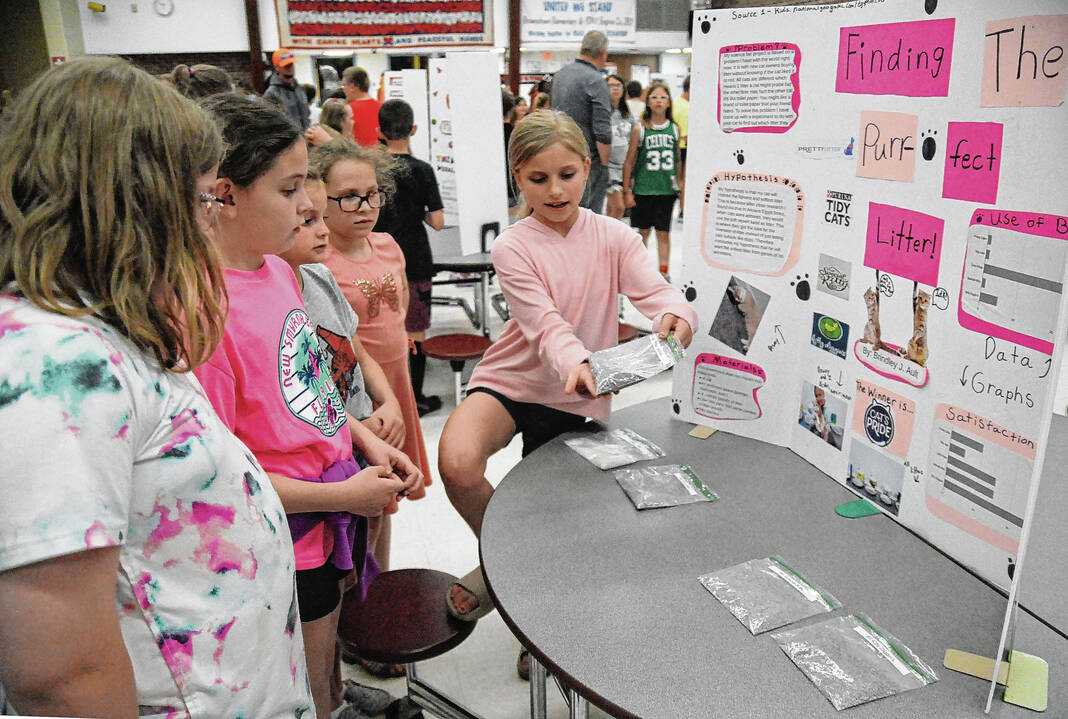
Brownstown Elementary School fifth-grader Brindley Ault holds the bag of cat litter her cat prefers, which she determined through a science fair project.
Zach Spicer | The Tribune
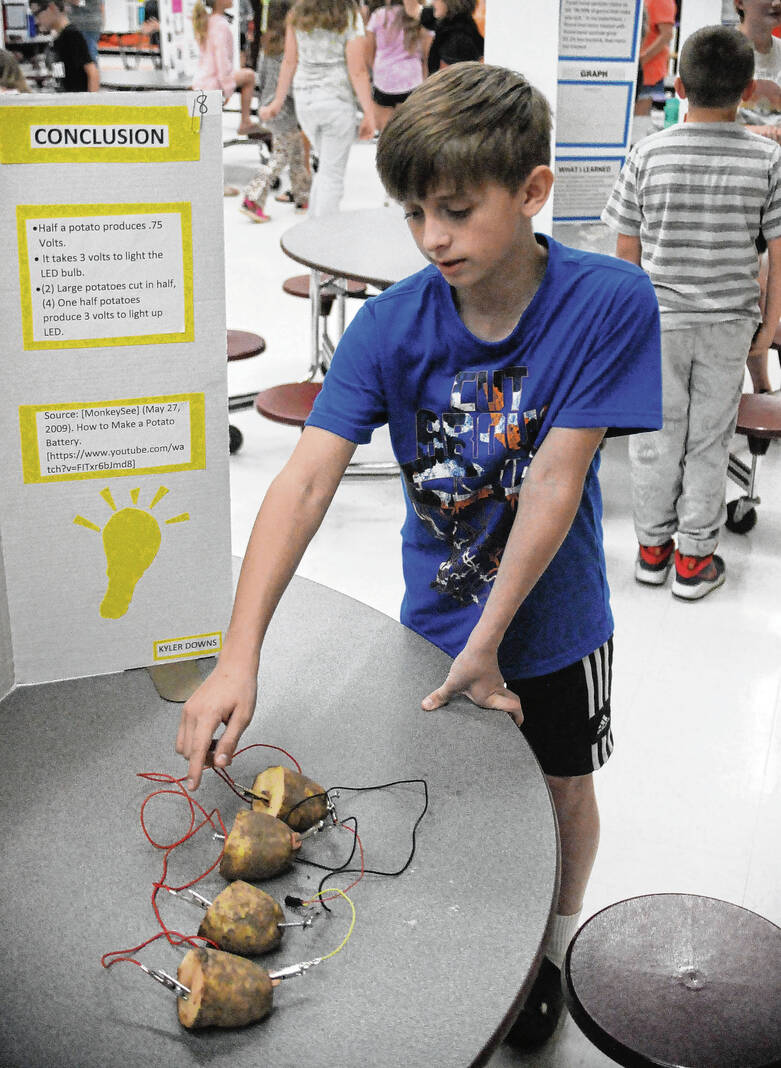
Brownstown Elementary School fifth-grader Kyler Downs talks about the potato battery project he did for a science fair.
Zach Spicer | The Tribune
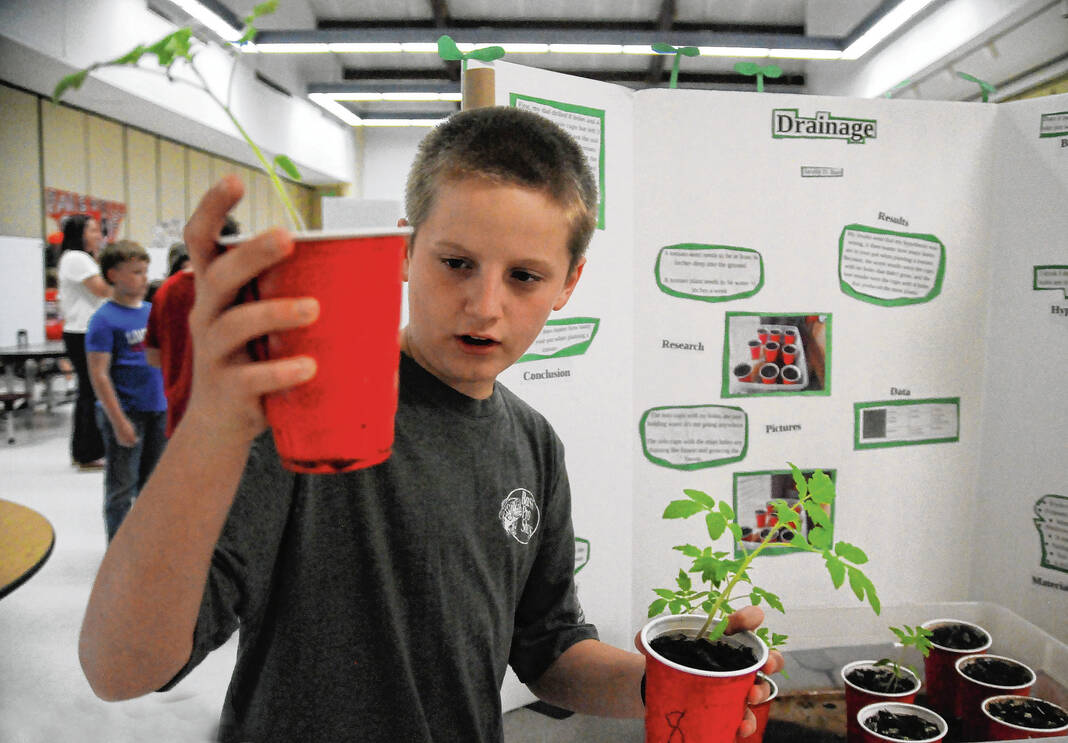
Brownstown Elementary School fifth-grader Jacoby Barr talks about tomato plants he put in different cups to demonstrate drainage for a science fair project.
Zach Spicer | The Tribune
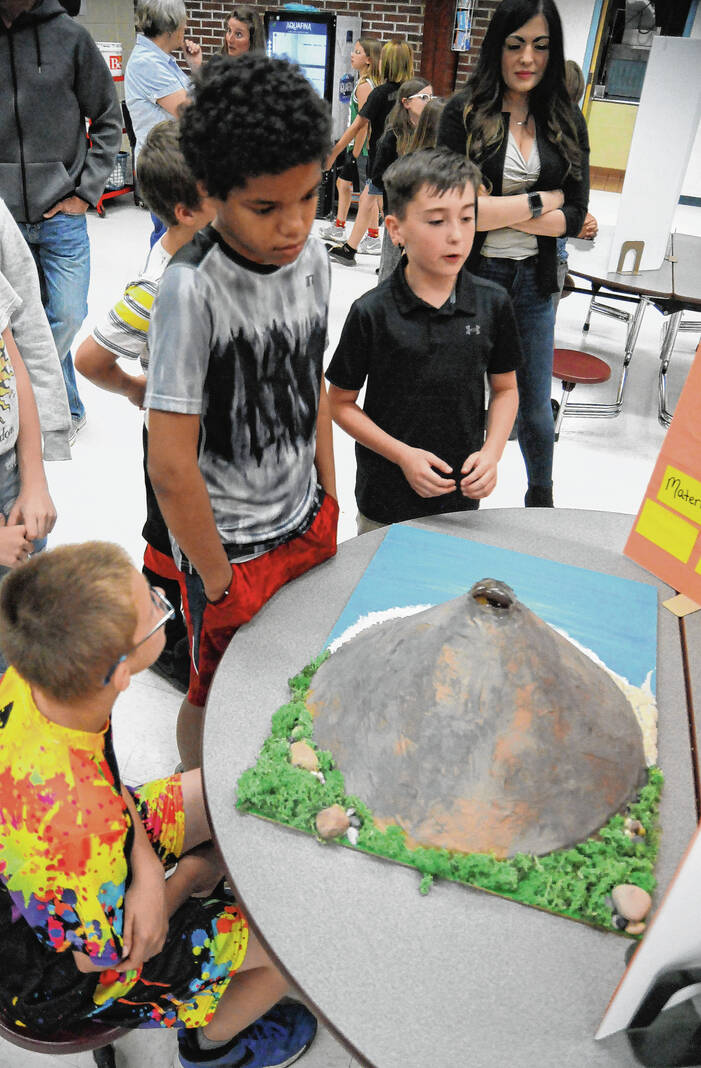
Brownstown Elementary School fifth-grader Bradey Humphrey, right, made a volcano for a science fair project.
Zach Spicer | The Tribune
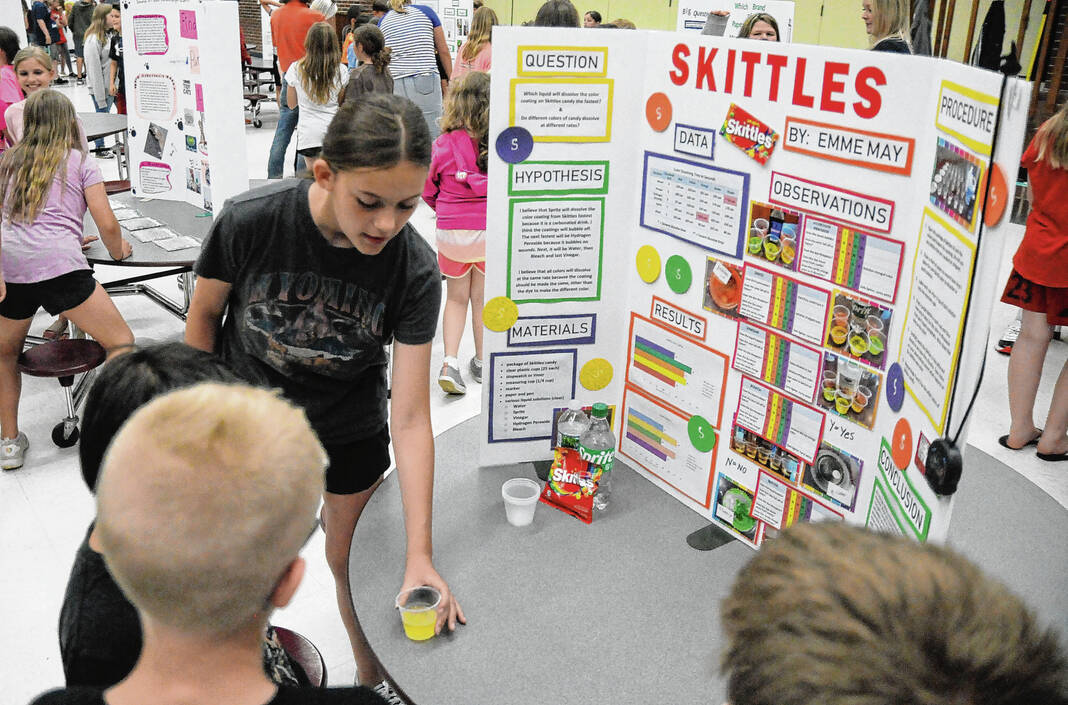
For her science fair project, Brownstown Elementary School fifth-grader Emme May tried to figure out which liquid would dissolve the color of Skittles candy the fastest.
Zach Spicer | The Tribune
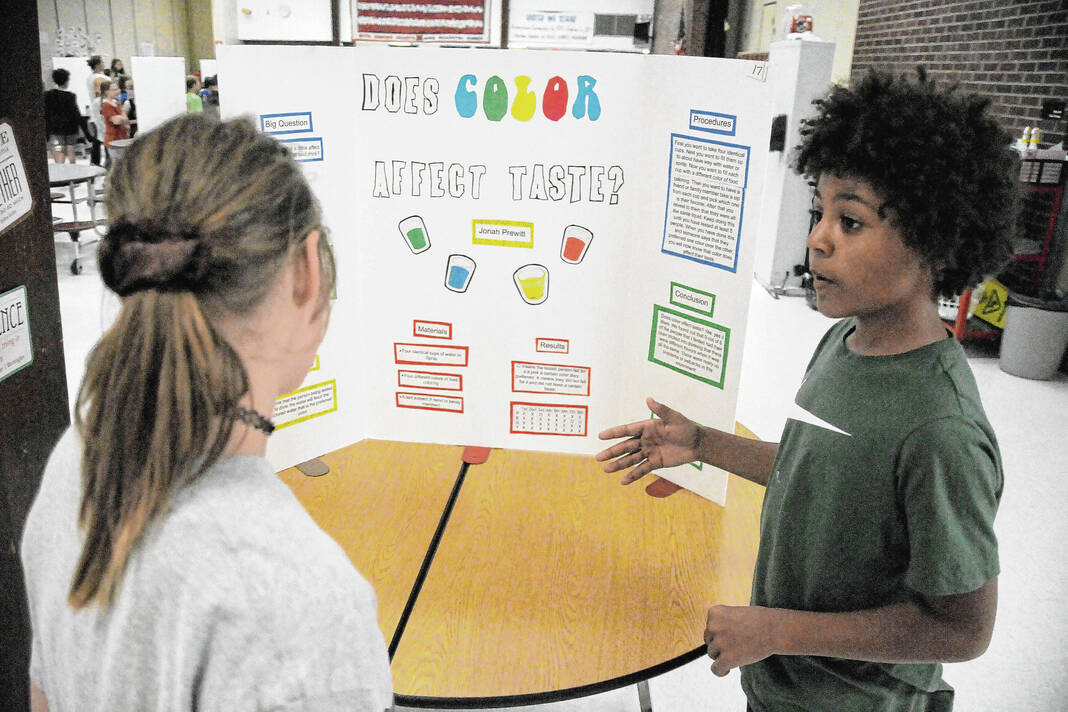
Does color affect taste? That was the big question posed for Brownstown Elementary School fifth-grader Jonah Prewitt’s science fair project.
Zach Spicer | The Tribune
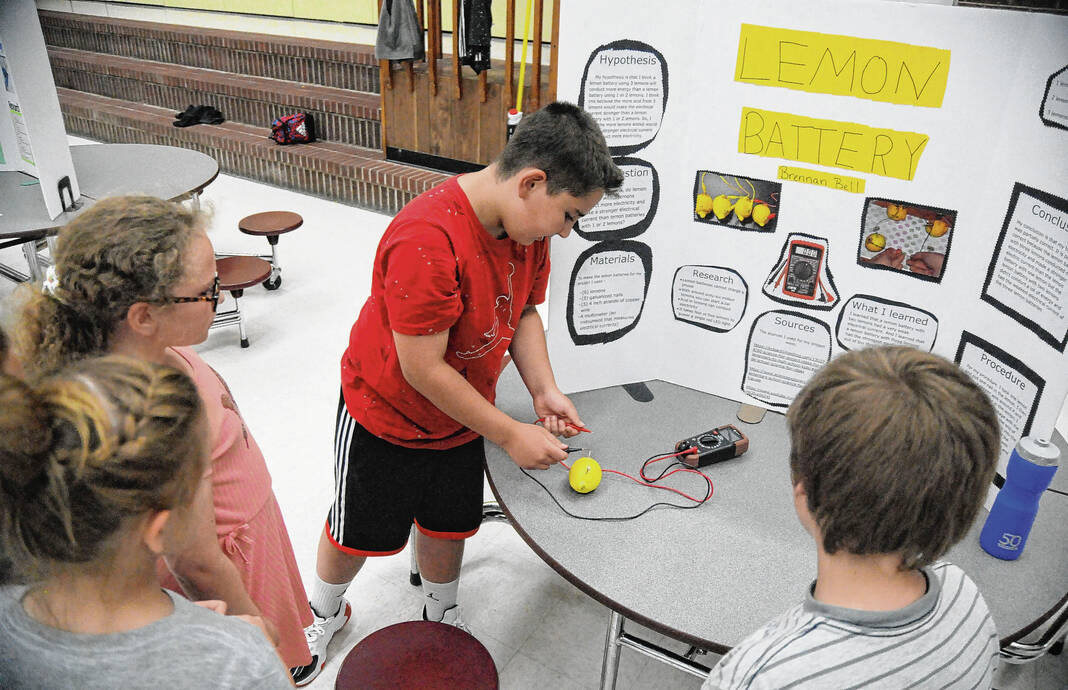
Brownstown Elementary School fifth-grader Brennan Bell demonstrates a lemon battery for a science fair project.
Zach Spicer | The Tribune
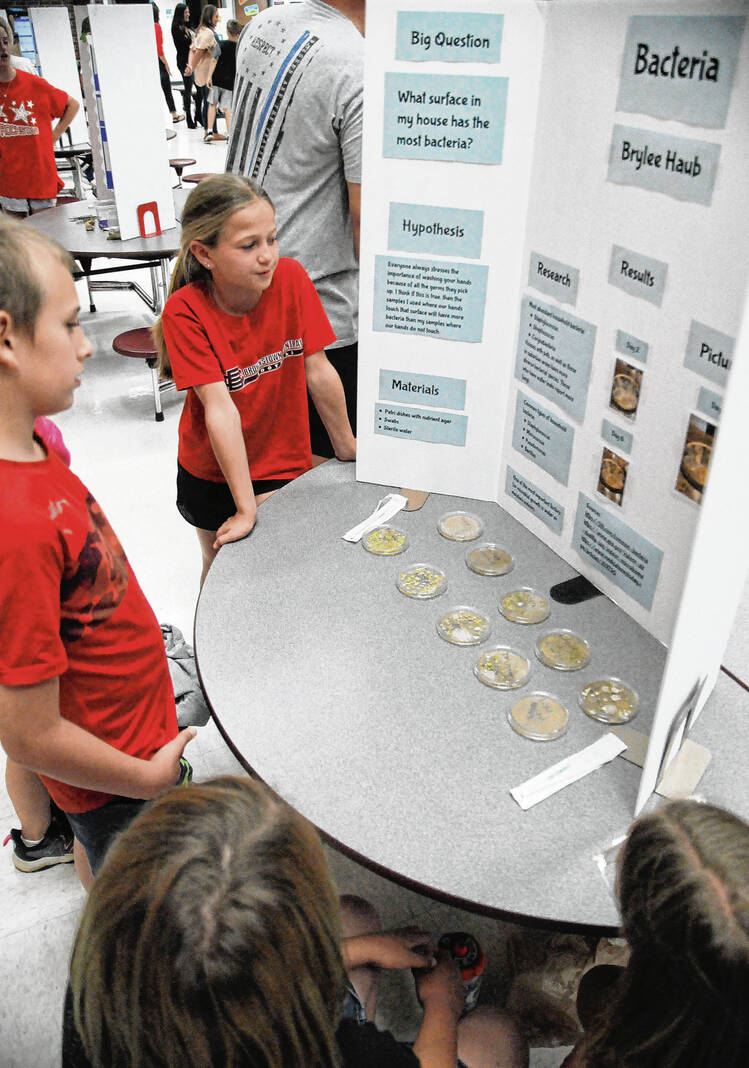
Brownstown Elementary School fifth-grader Brylee Haub figured out which surface in her home had the most bacteria for her science fair project.
Zach Spicer | The Tribune
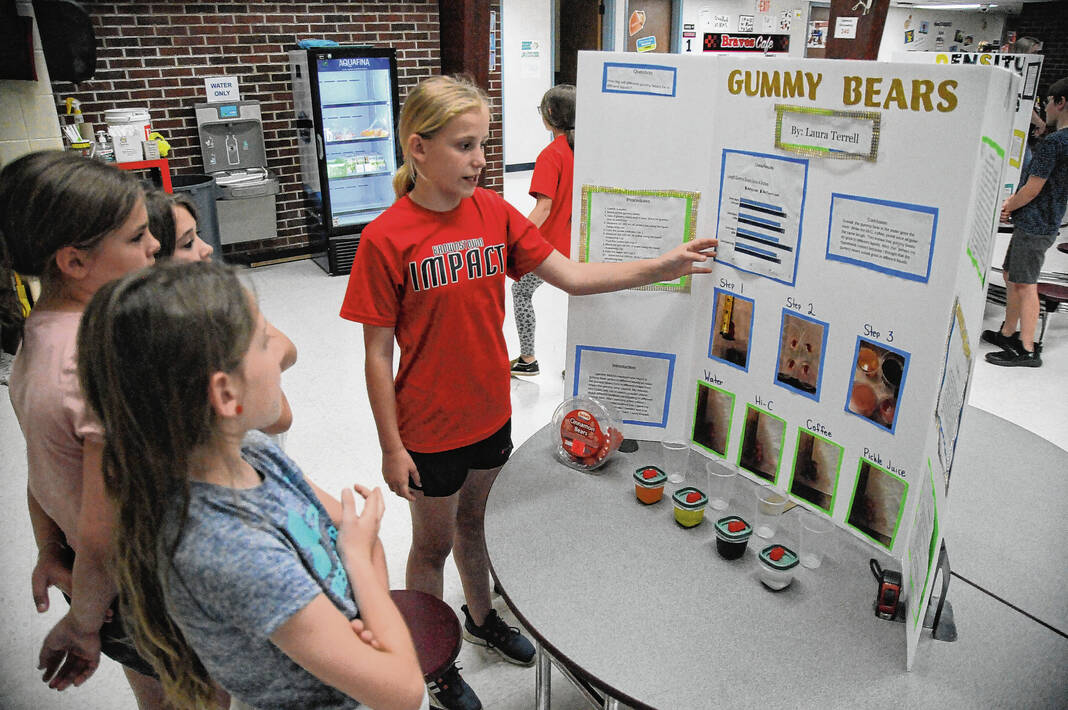
Brownstown Elementary School fifth-grader Laura Terrell determined how big a gummy bear would get in different liquids for a science fair project.
Zach Spicer | The Tribune
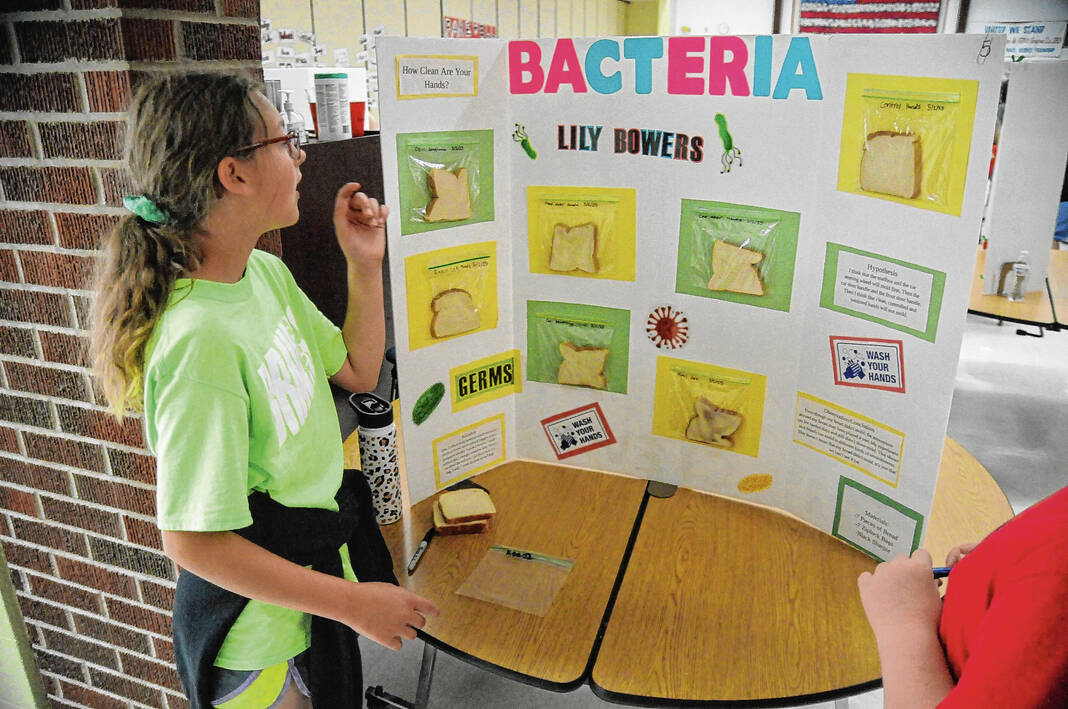
Brownstown Elementary School fifth-grader Lily Bowers asked “How clean are your hands?” for a bacteria-focused science fair project.
Zach Spicer | The Tribune
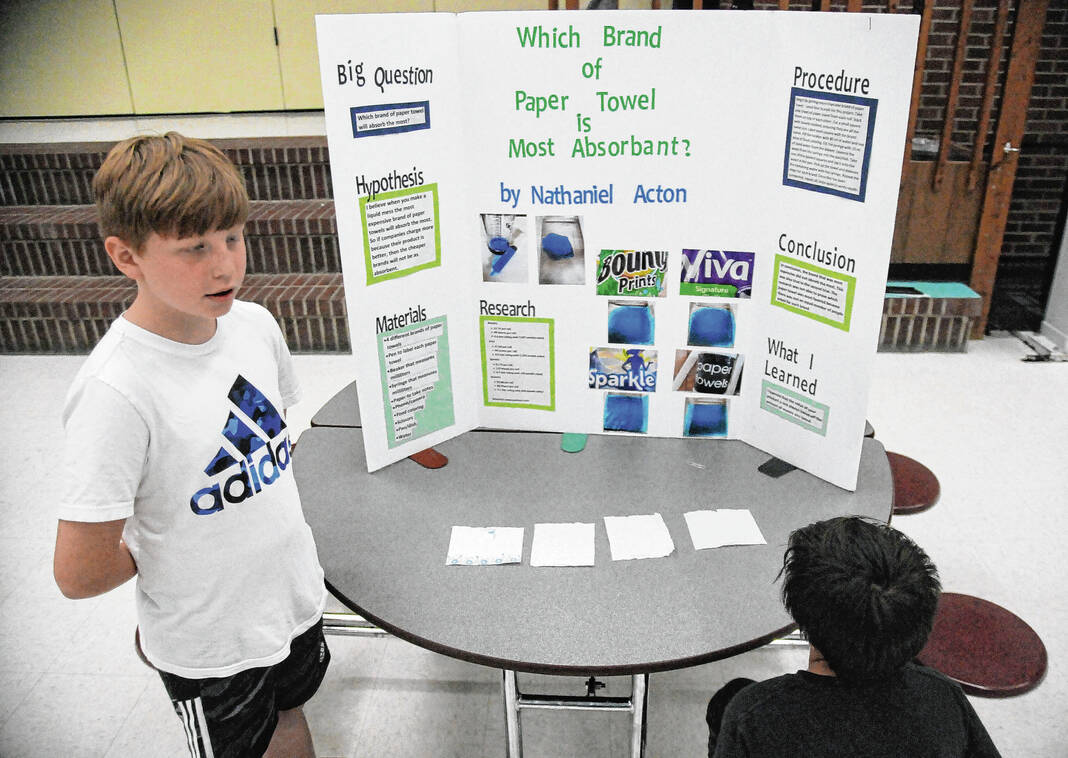
Brownstown Elementary School fifth-grader Nathaniel Acton figured out which brand of paper towel is the most absorbent for a science fair project.
Zach Spicer | The Tribune
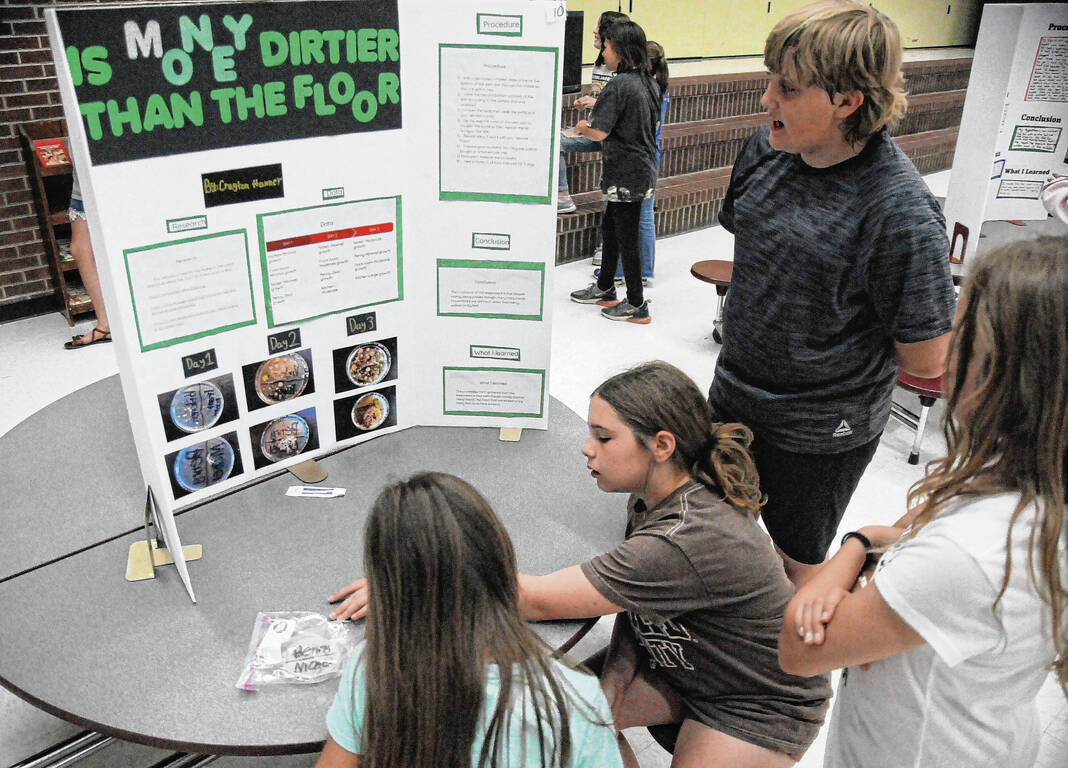
Brownstown Elementary School fifth-grader Crayton Hanner did an experiment to see if money is dirtier than the floor for a science fair project.
Zach Spicer | The Tribune
BROWNSTOWN — Kyler Downs determined the power of a potato, while Brennan Bell learned about the power of a lemon.
The Brownstown Elementary School fifth-graders were fascinated that connecting certain items to produce could produce an electrical current.
Had they not had to come up with a science fair project in Mary Cobb’s class, they may have never realized this was even possible.
“I’ve never seen a potato give out voltage or anything,” Downs said. “It can be used in emergency situations.”
Now, he knows potatoes aren’t just for eating. He can grab some pennies, wire and potatoes and produce light.
“My mom found it on a website, but then we figured out how to do it from the sources on YouTube,” Downs said of his potato battery project. “It took a little bit to actually figure it out, but it’s cool.”
Bell found lemon battery on a website with science fair ideas shared by Cobb. That involves putting copper wire, a nail and a galvanized metal stick in or on a lemon, and connecting it to a device will show the amount of electricity it conducts due to the citric acid.
He tried it with one lemon, two lemons and three lemons and compared them.
“I really liked the lemon battery,” he said. “It was just fun making the lemon battery.”
By participating in the science fair May 22 in the school’s cafeteria, the boys learned just how fun science can be if you’re interested in the topic.
“You can figure out new stuff that you’ve never found before,” Downs said.
Cobb said this was the first time she has had a class conduct a science fair. She had participated in one when she was the students’ age and later saw one conducted in Southport.
“I always wanted to try to fit that in, and so this year, I was like, ‘I’m just going to bite the bullet and go for it,’ and so we did. We went for it,” she said. “I was nervous about it because I wasn’t sure how the logistics and everything would work, but it seems to have been pulled off OK.”
A couple of months ago, she gave each student a packet that gave them an idea of what their ensemble should look like. On a trifold board, they had to apply the scientific method, which includes coming up with a problem, asking a question, forming a hypothesis, testing it, analyzing data, drawing a conclusion and communicating the results.
In recent years, the scientific method became a fifth grade standard, so various labs are conducted throughout the school year.
“In the curriculum, they actually do that through the whole year where they are making a hypothesis and then they are testing it to see what’s going to happen, so now, they got to do their own thing, what they wanted to do,” Cobb said. “A science fair is a perfect way to test what they’ve learned through the year.”
Cobb said it was interesting to see what the students picked.
“Some, I understood where they came from,” she said. “Some were really passionate about it. … You had some that were just gung-ho on a certain one, and then others just weren’t really sure what they were going to do, so they went ahead and researched on the computer to see what ideas were out there.”
Brylee Haub focused on bacteria to see what types were found on 10 different surfaces in her home.
“I thought it was pretty cool,” she said of the outcome of her results.
Brindley Ault’s project was called “Finding the purr-fect litter,” where she picked six brands of cat litter, ranging in price from to $2 to $26, to see which one her 9-month-old cat, Dewey, preferred. She found out her cat liked the one in the $8 price range, Cat’s Pride.
“I love cats, and I wanted to come up with an original idea. Everyone else was picking off of websites and stuff,” she said. “I thought this would be interesting because I wanted to show that cats do have a smart mind and pick out which litter they like.”
Jacoby Barr put tomato plants and soil in Solo cups and poked different sizes of holes in the bottom to demonstrate drainage.
He got that idea because his family farms and maintains a garden.
“I liked being able to have the choice of what you get to do, and growing plants is what my family does, so this is something I get to do,” he said.
Cobb was proud of the time and effort her students put into their projects.
“They have put in a lot of work,” she said. “You have kids that actually did a lot of work in the classroom and they would print off stuff in the classroom and put things together and display it out. You had kids that took it home and they worked on it there. Some did both places, so it was just a variety of stuff. There was a lot of effort and pride, and I’m really, really proud of them.”
Presenting to other students and teachers at the school and to family members also was a good opportunity to practice public speaking.
Cobb said it generated interest in other students at the school, and she plans to do the science fair on an annual basis.
“I’ve already got somebody who is coming into my class for next year and they said they already got one that they know they are going to do,” she said. “They are already excited that they are coming in, and they are ready.”
